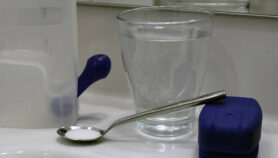By: Zhen Yue
Send to a friend
The details you provide on this page will not be used to send unsolicited email, and will not be sold to a 3rd party. See privacy policy.
[KUALA LUMPUR] A new rapid tuberculosis (TB) detecting machine not only significantly reduces the time it takes to identify the disease but also leads to more accurate diagnosis than current tests, according to field trials unveiled by a medical humanitarian group.
Field tests made as part of 25 Doctors Without Borders (Médecins Sans Frontières, MSF) projects in 14 countries over nearly 18 months show that the Xpert machine diagnosed 50 per cent more TB cases compared with the most common current test for the disease. The results were presented last month (14 November) at the 43rd Union World Conference on Lung Health in Malaysia.
Martina Casenghi, scientific advisor of MSF’s Access Campaign that aims to broaden the availability of medicines, tests and vaccines, says that the machine can detect TB bacteria even when they are present in low numbers by amplifying their DNA from a sample placed in the machine.
Overall, the device enables faster diagnosis and, therefore, treatment compared with the most common current test, in which bacteria must be cultivated and then undergo testing to see which drug will successfully treat the patient, she says.
"It takes around a couple of months to get the results and, in the meantime, the patient is going around sick, which also leads to further spread of the bacteria. With Xpert, the results can be obtained within two hours," says Casenghi.
One challenge still to be overcome with the new test is the diagnosis and treatment of children with TB, says MSF. This is because the test still requires sputum samples, but collecting them can be problematic as children are rarely able to cough them up, it says.
In addition, they often have extra-pulmonary TB, a form of the disease in which the bacteria are present outside the lungs, according to MSF. This makes it hard to detect the disease by examining sputum under a microscope as there are likely to be too few bacteria to detect, it says.
"In an attempt to get adequate samples, health workers are forced to use invasive and painful measures, such as forcing vapour into children’s lungs to make them cough up sputum or sucking out sputum from their stomachs," says Casenghi.
"We urgently need a TB test for kids that doesn’t rely on sputum and can use samples that are easier to obtain, such as blood, urine or stool," she says.













